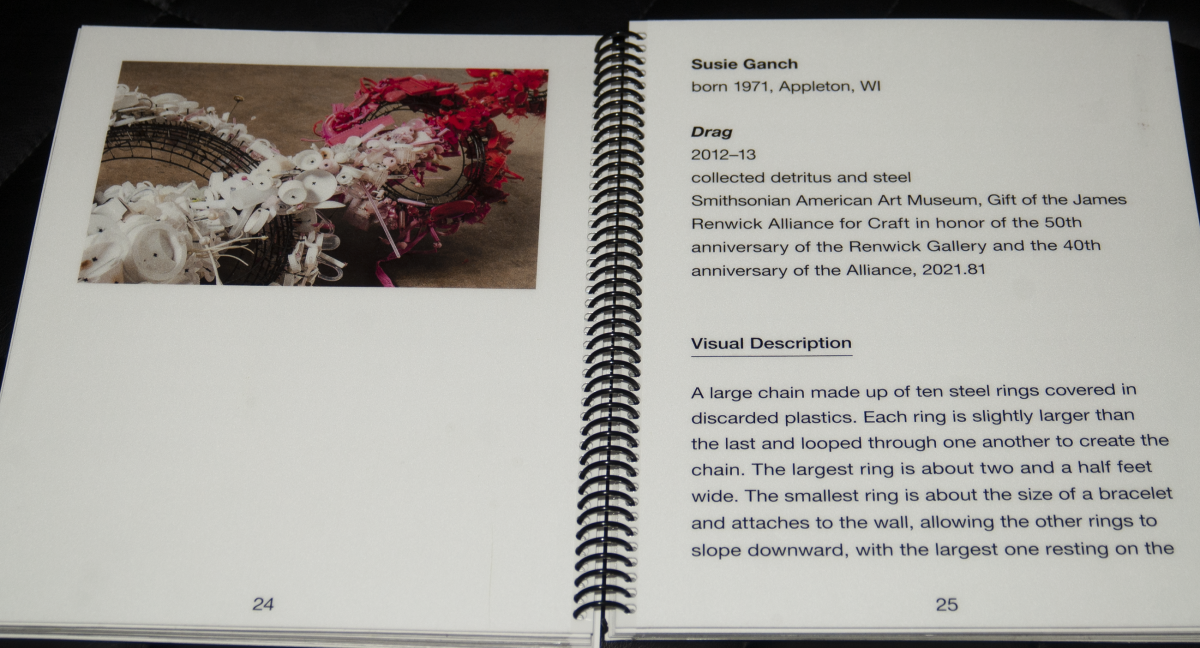Visitors who are blind or have low vision have been traditionally overlooked at art museums, due to an assumption that sight is required to fully appreciate the artwork in the galleries. Here at the Smithsonian American Art Museum (SAAM), we strive to dismantle this assumption and remove barriers by providing visual descriptions of art. For the exhibition, This Present Moment: Crafting a Better World at SAAM’s Renwick Gallery, we have created visual descriptions for sixteen works of art. These descriptions are available to the public online via personal screen readers and on the exhibition web page; through Aira, a free visual interpretation mobile app; and in large print copies on paper in the galleries.
Visual descriptions convey what the writer sees through two separate acts of translation: transforming a visual experience into a verbal one, and turning a private experience into one that can be communicated to someone else. The greatest challenge while writing these descriptions was separating interpretation from description. While it feels natural to interpret art and share our experiences, it is crucial to realize that interpretation on behalf of someone else is not equitable. Doing so takes away an individual’s right to draw their own conclusions. We hope to provide a space for our visitors who are blind or have low vision to experience and interpret the art freely for themselves by way of these visual descriptions.
Before publishing the descriptions, our team met with user experts who provided critical feedback. Alone, objective description is dry and unfulfilling, however, when paired with vibrant language and energy, provides an exciting way to engage with the artistic experience. At the end of the session, the user experts expressed their excitement that visual descriptions are being included as resource in the galleries. It is important to note that these descriptions are not meant to be used exclusively by our target demographic; the greater hope is they will be a useful resource to many visitors.
Everyone should feel free to experience and interpret the art in our collection and we are working to meet people where they are to facilitate deep conversations that relate to our shared world. Moving forward, we are looking to include visual descriptions in more exhibitions, for an even larger variety of work. The visual descriptions are just one of many accessibility initiatives at SAAM including gallery talks and an accompanying video series in American Sign Language led by deaf gallery guides, visual description tours for visitors who are blind or have low vision, and an art discussion program designed for visitors with memory loss.
We have a lot of work to do as we continuously strive towards inclusion at SAAM, but we are already seeing progress. I have hope for the future and the ways SAAM can provide an equally valuable experience to everyone who walks through our doors.
Hannah Owh is a management support assistant at SAAM's Renwick Gallery.






















